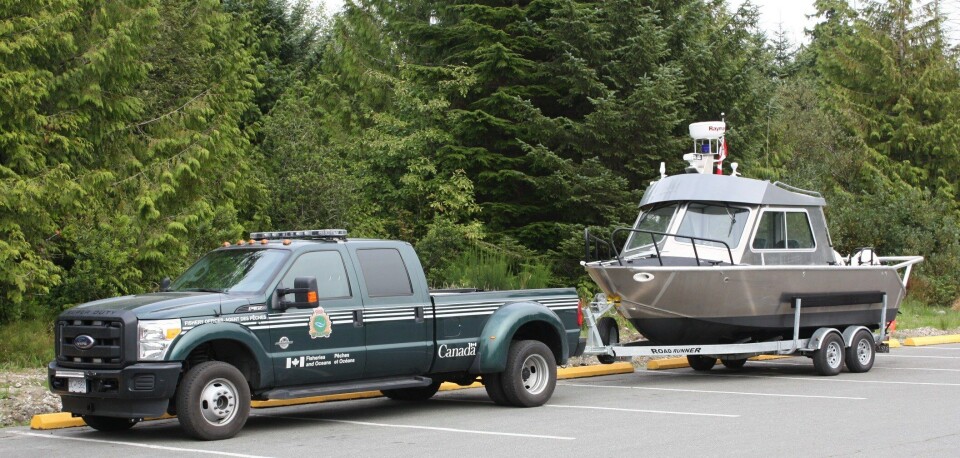
More controls coming to B.C. fish farms
The Canadian Department of Fisheries and Oceans (DFO) has been in charge of the management of aquaculture in British Columbia for just over a year, and some of the changes brought in as a result are commitments to increased public reporting and industry transparency as well as more control of compliance to the new regulatory regime. On Monday this week, DFO Minister Keith Ashfield was in Campbell River to announce- among else- the purchase of six new vessels to be used for these purposes.
Three of the boats are to be used in the Aquaculture Management Program, for the monitoring and auditing of records pertaining to issues like
- Fish health management inspections
- Sea lice audits
- Stream surveys
- Benthic (ocean floor) sampling and remote-operated vehicle assessments
- Facility inspections
The other three- ranging in size from six to 9.7 metre- will be used in the Enforcement Program, transporting fishery officers to aquaculture facilities “to conduct announced and unannounced site inspections and enforce compliance with the Pacific Aquaculture Regulations and the Fisheries Act”.
DFO issued the following Press Release on Monday;
The Honourable Keith Ashfield, Minister of Fisheries and Oceans, welcomed six British Columbia-made vessels into the departmental fleet today. “Our government is proud to ensure that Fisheries and Oceans Canada has the tools it needs to regulate the aquaculture industry in British Columbia and ensure that it operates in a sustainable and environmentally responsible manner,” Minister Ashfield said. “We are committed to an economically and ecologically viable fishing and aquaculture industry across Canada.”
The six vessels, of various sizes and construction, are dedicated to the B.C. Aquaculture Regulatory Program and carry out aquaculture regulatory and monitoring activities. Three of the vessels are used by aquaculture management staff for auditing and monitoring aquaculture sites, and three are used by aquaculture fishery officers for enforcement and compliance inspections. As the majority of aquaculture operations are located along the coast of Vancouver Island and in mainland inlets, and most are inaccessible by car, ensuring DFO staff are able to move freely on the water is an important aspect of regulating the aquaculture industry in B.C. The new Conservation and Protection vessels will allow fishery officers to respond quickly to events or public reports of potential concerns at farm sites, while staff on the aquaculture management vessels can deploy tethered remote underwater vehicles for site inspections and conduct and analyze benthic (ocean bottom) sampling.
Nationally, aquaculture production has increased four-fold in the past 20 years. Approximately 70 per cent of all Canadian aquaculture products are sold to foreign markets, and the world increasingly depends on aquaculture as an essential food source. In fact, globally, half of all fish and seafood is now farmed. British Columbia contributes the most farm-raised fish and seafood to Canada’s output annually.





















































